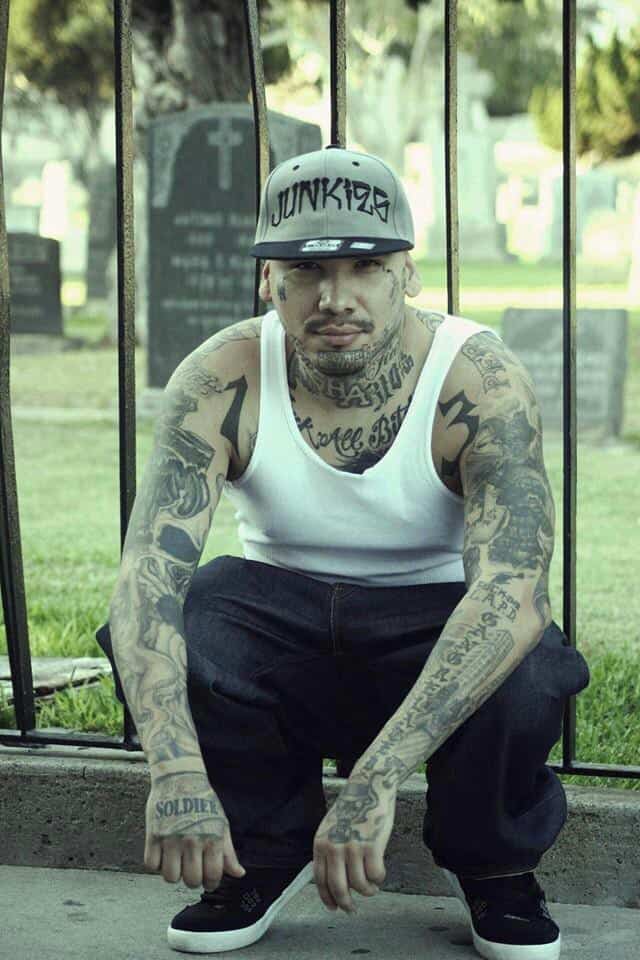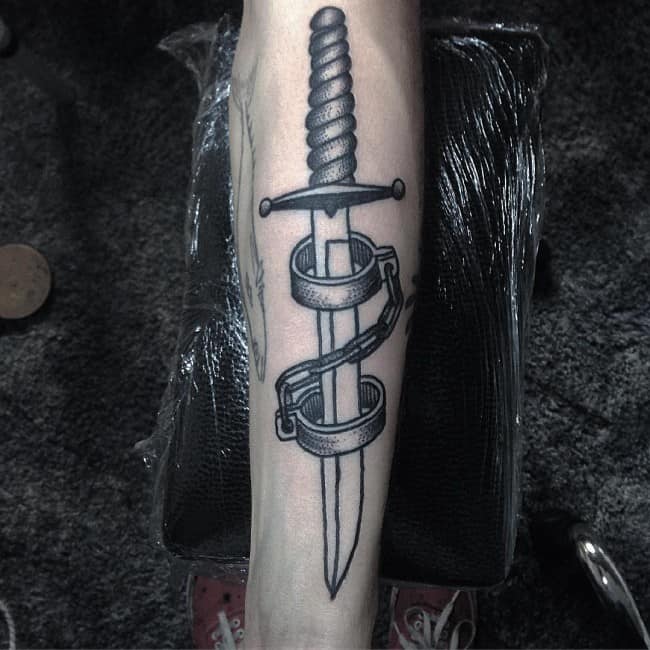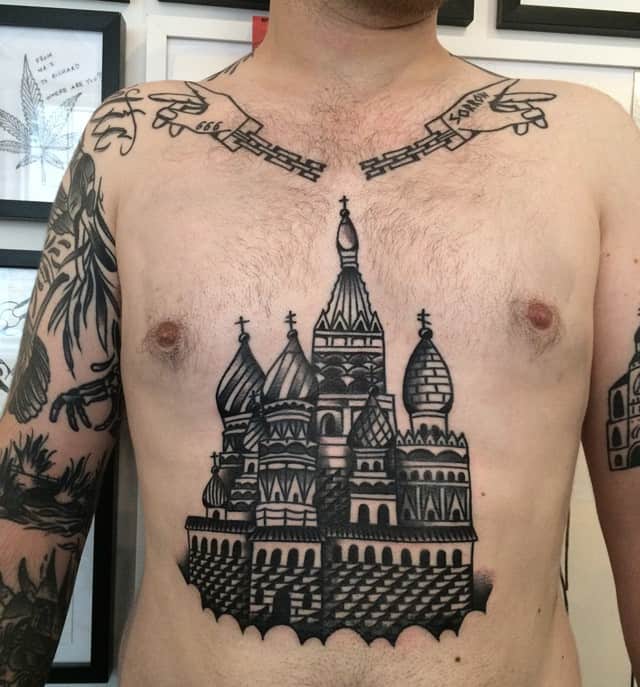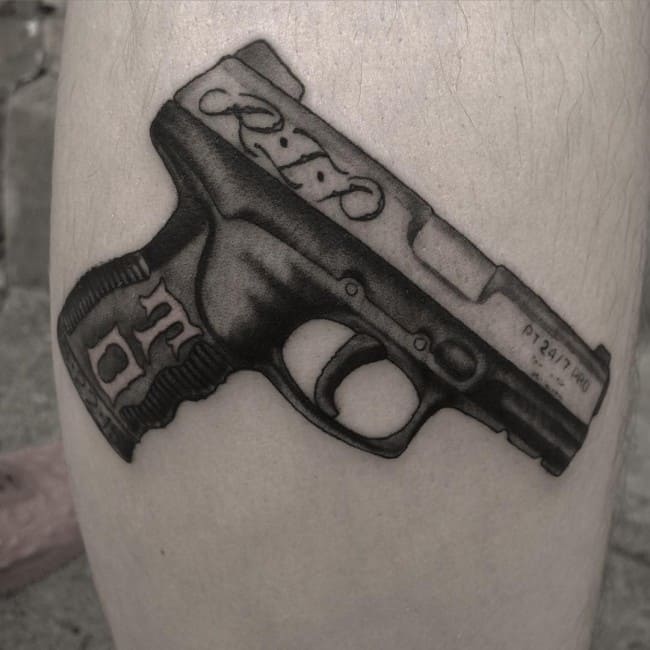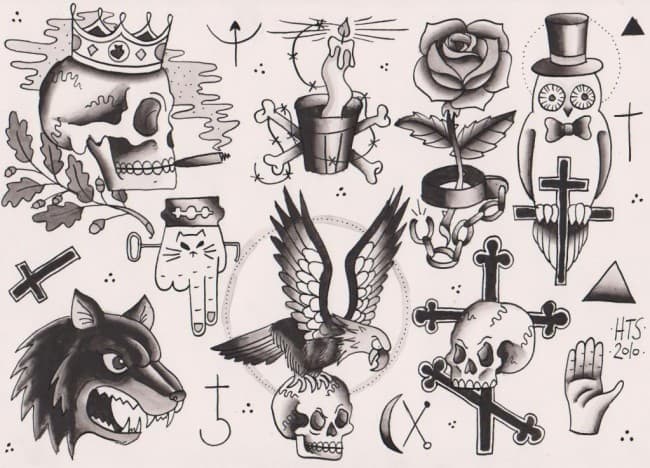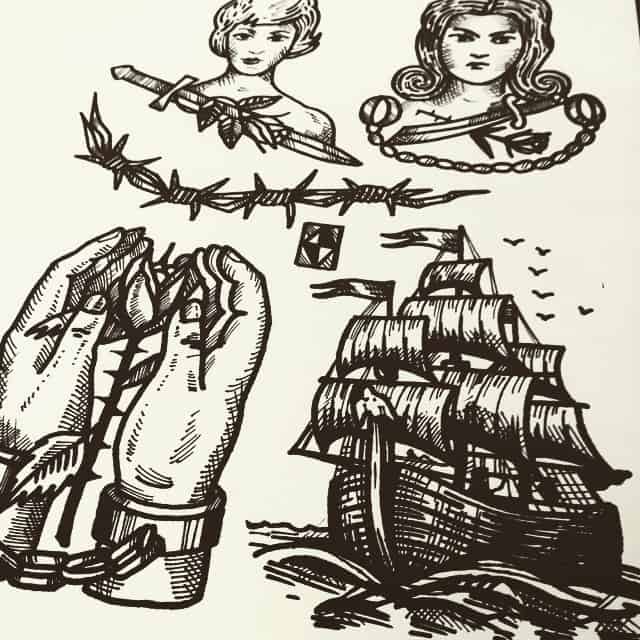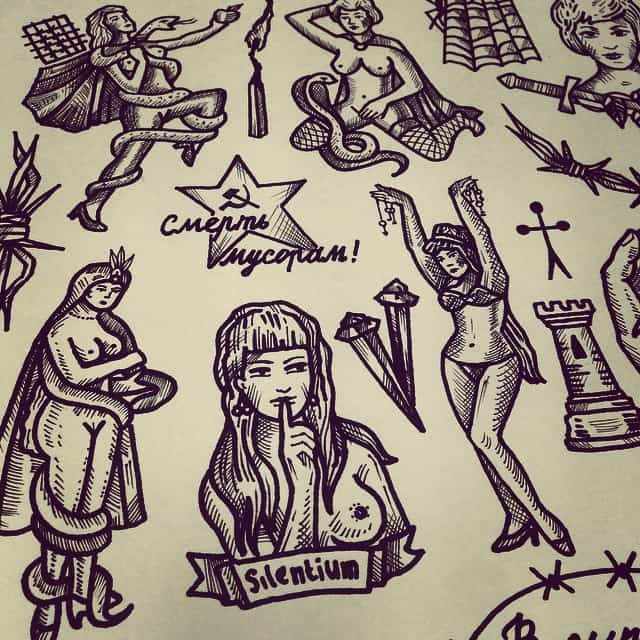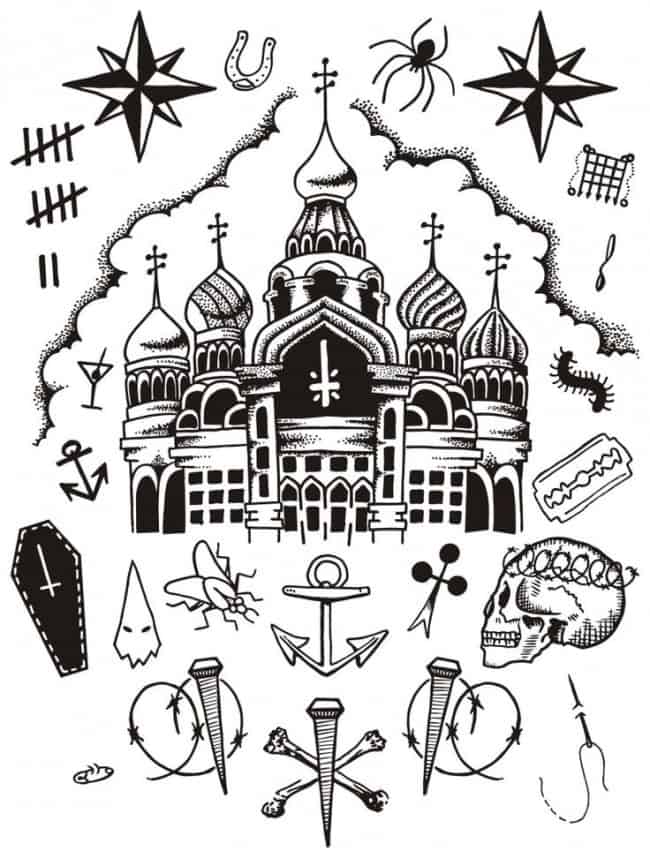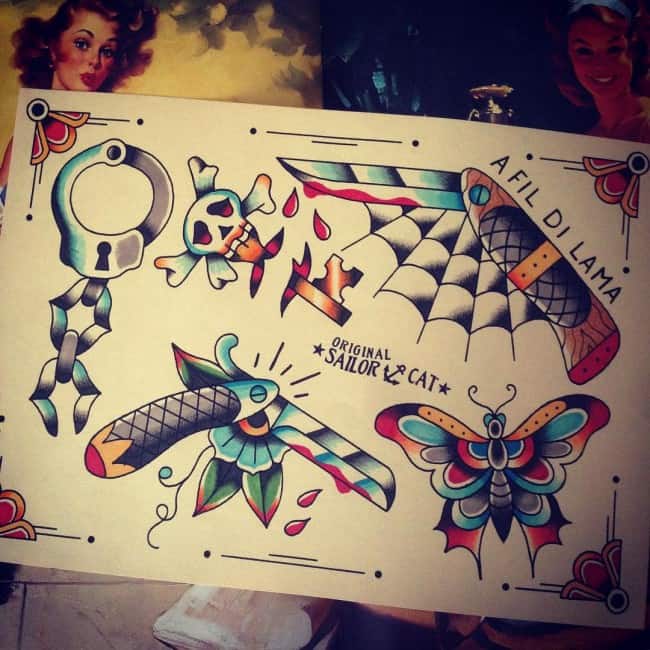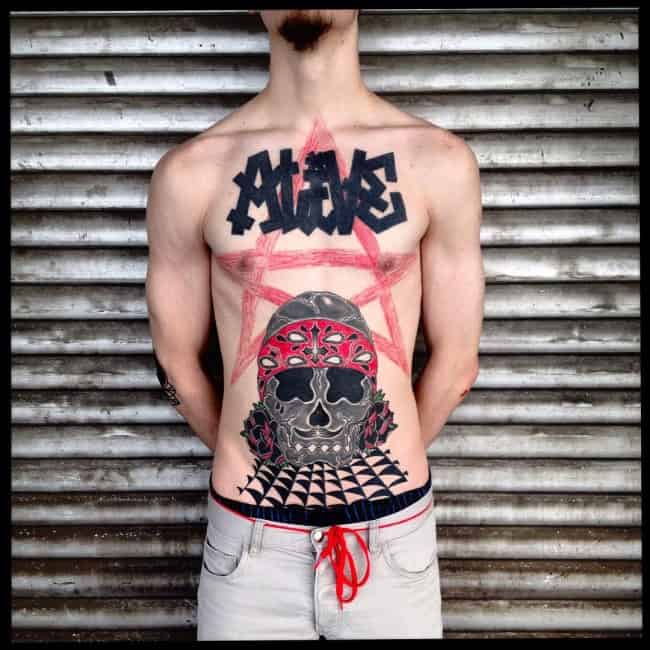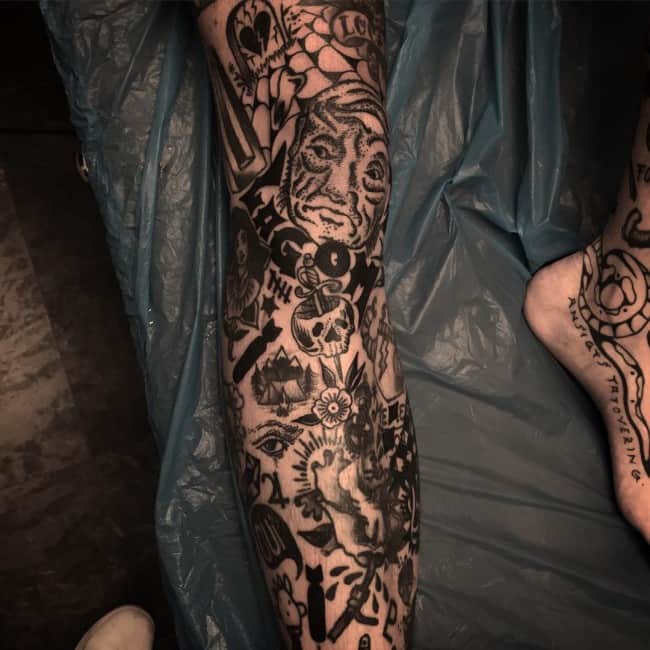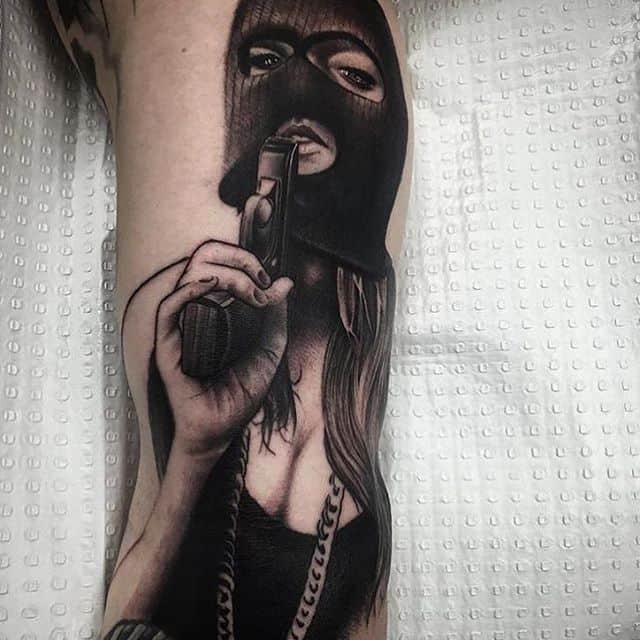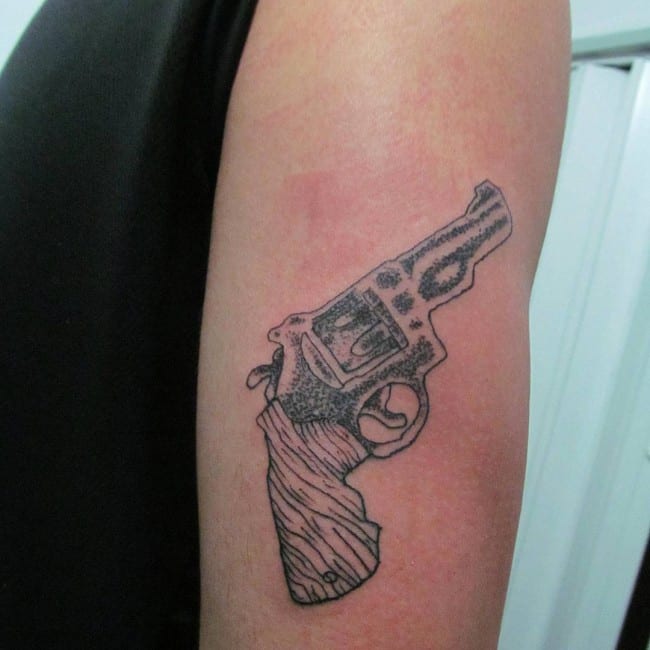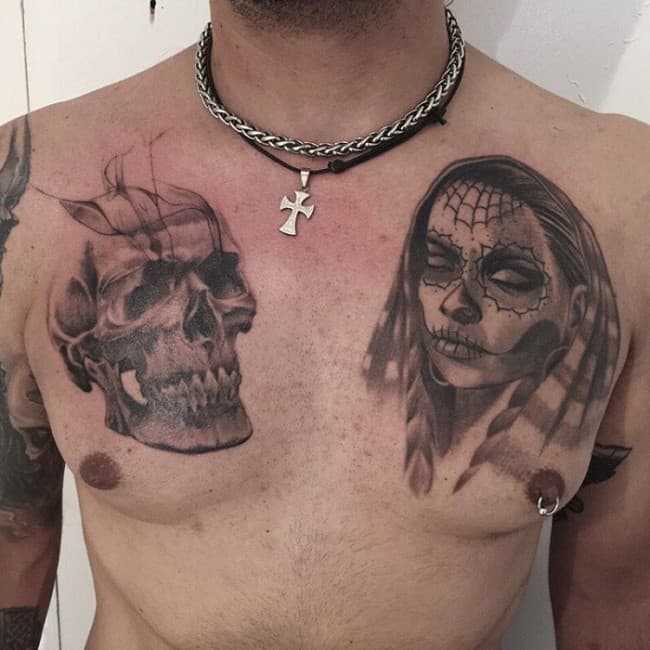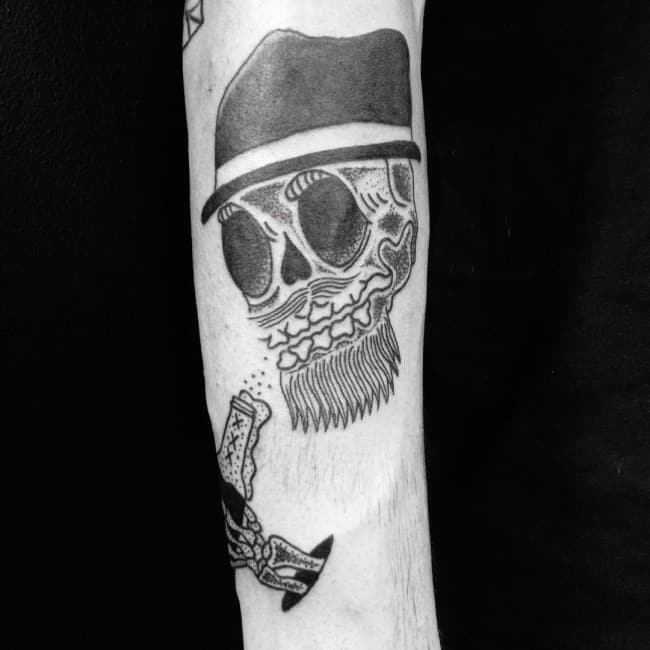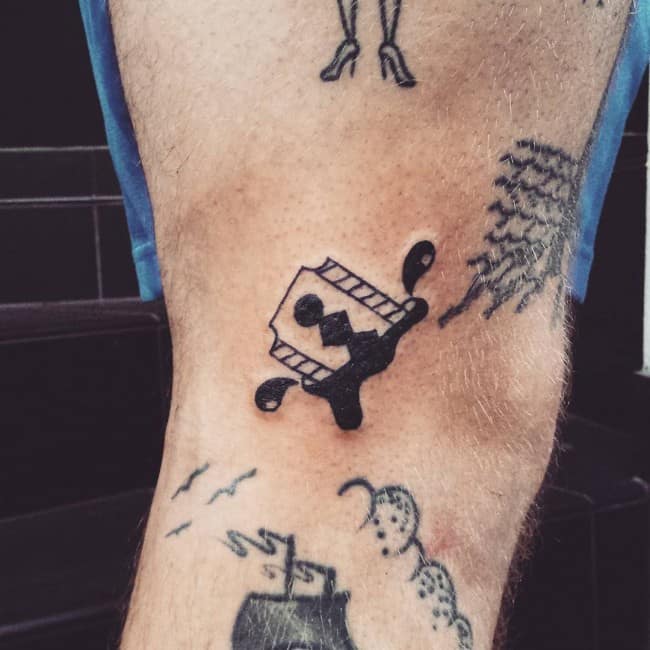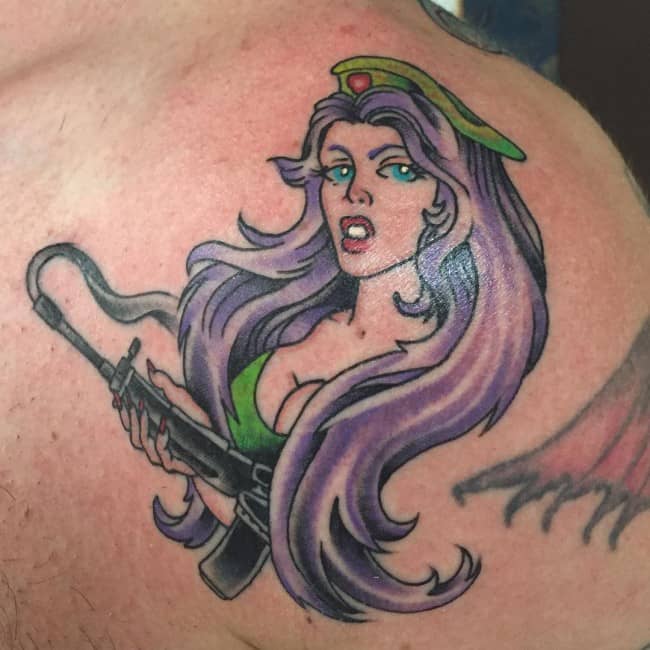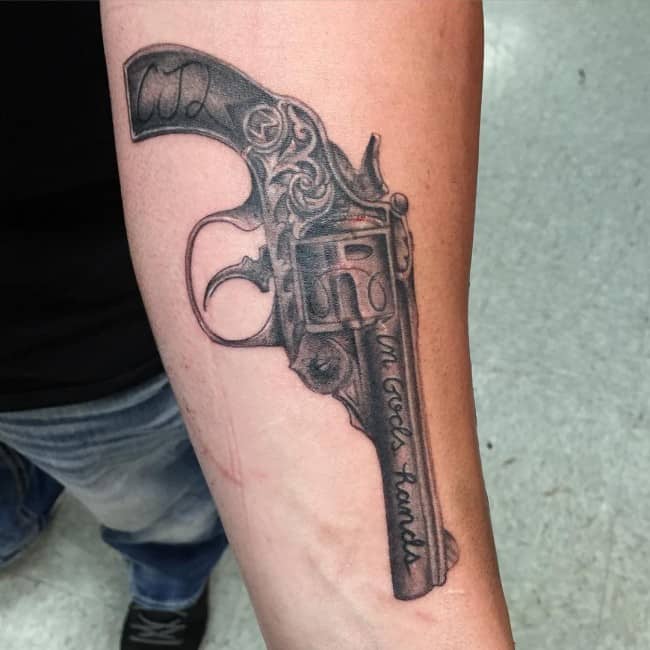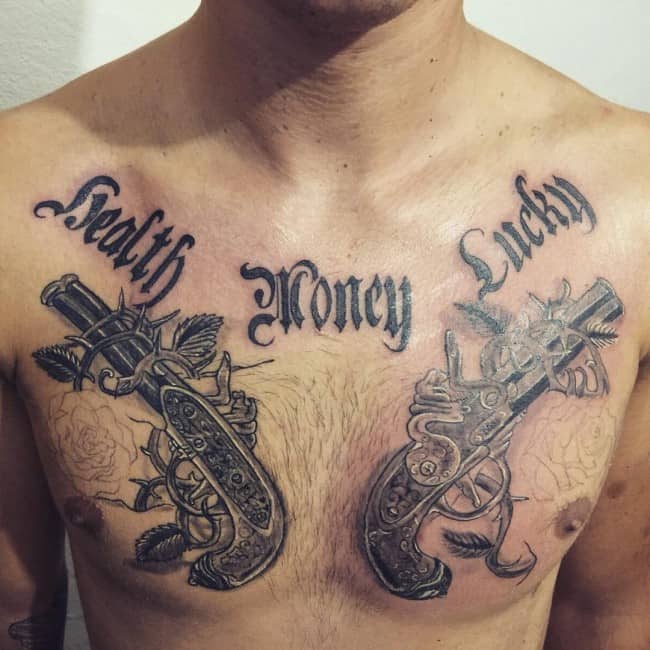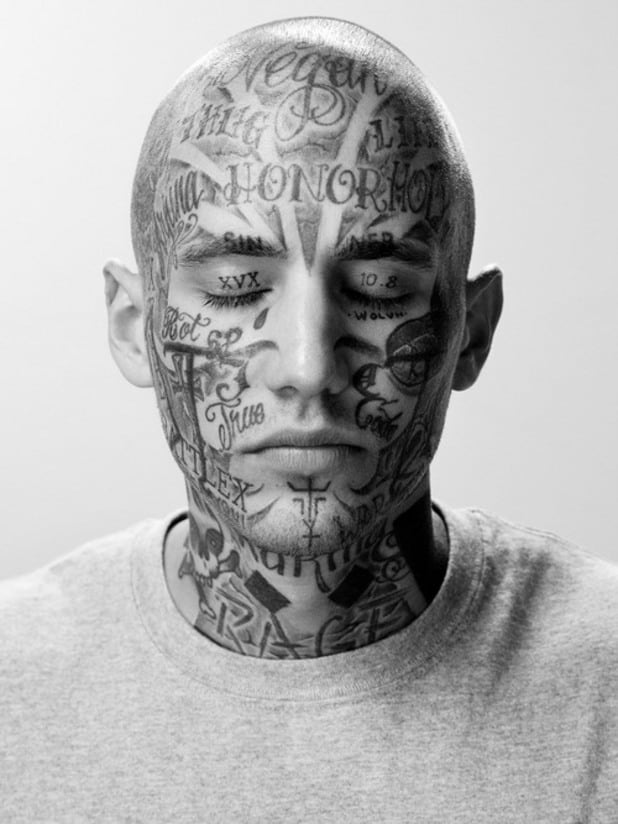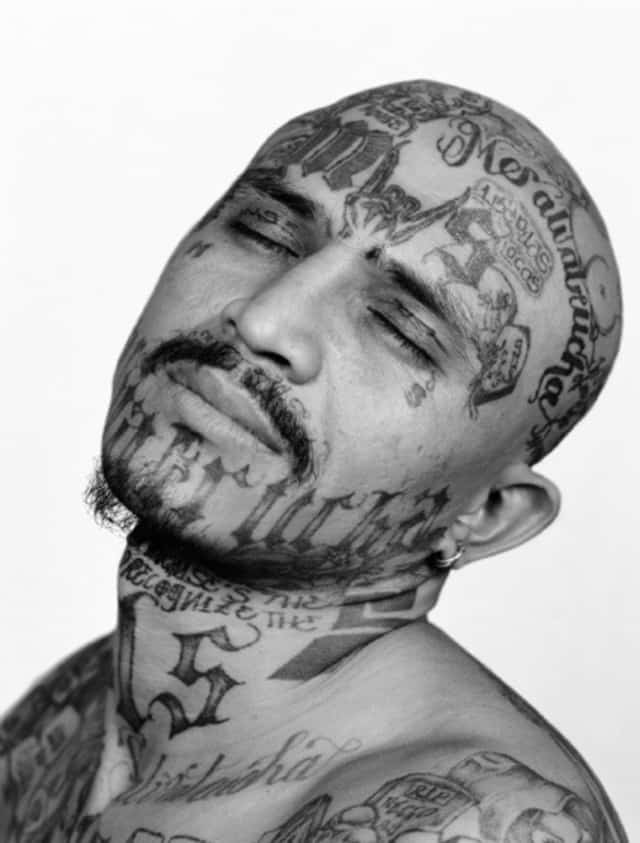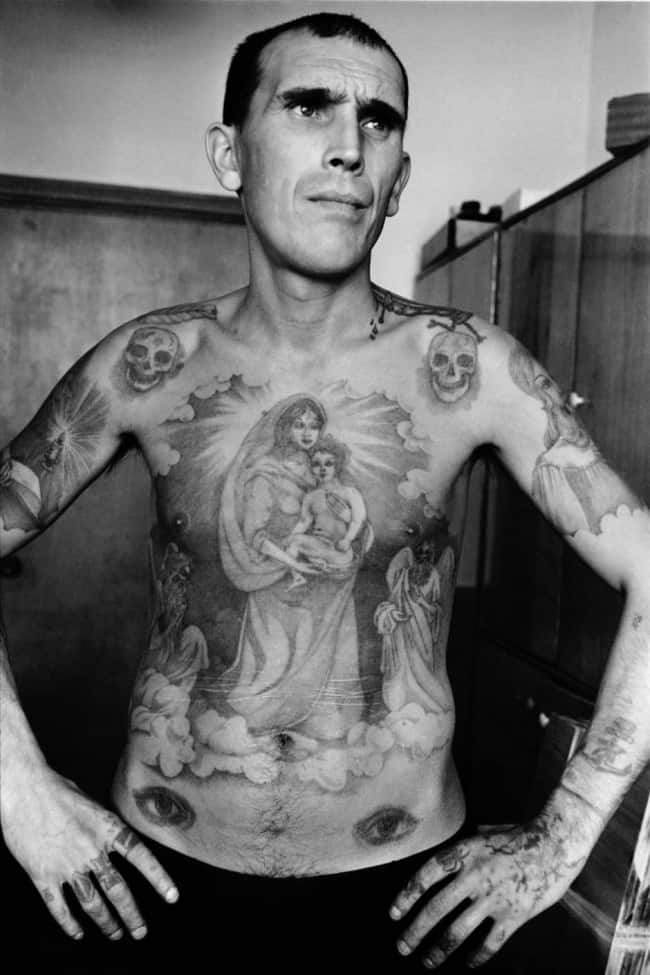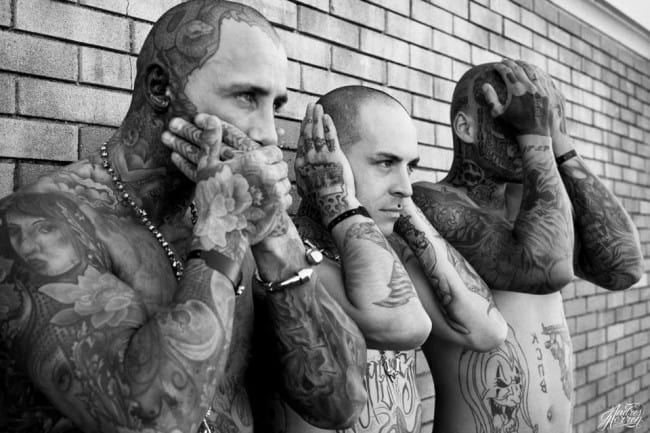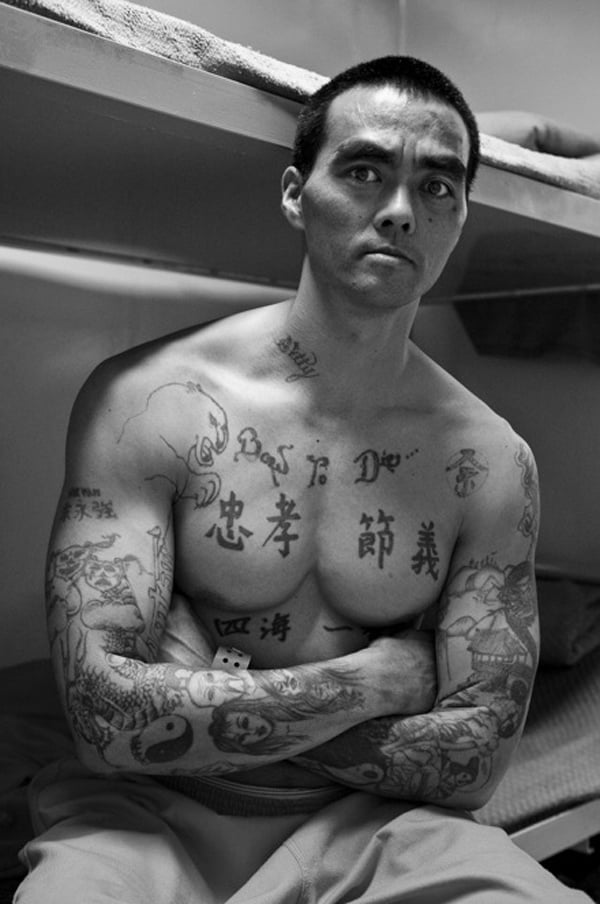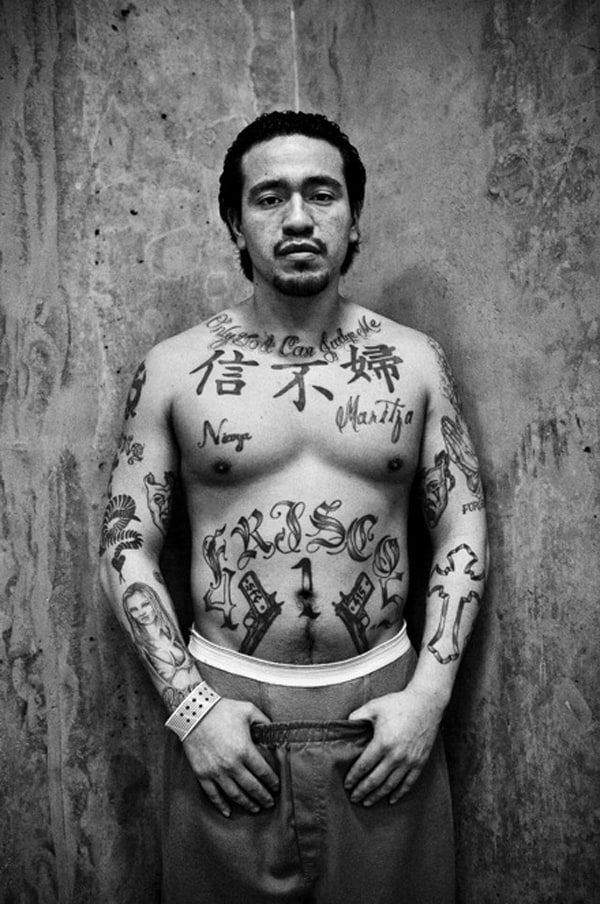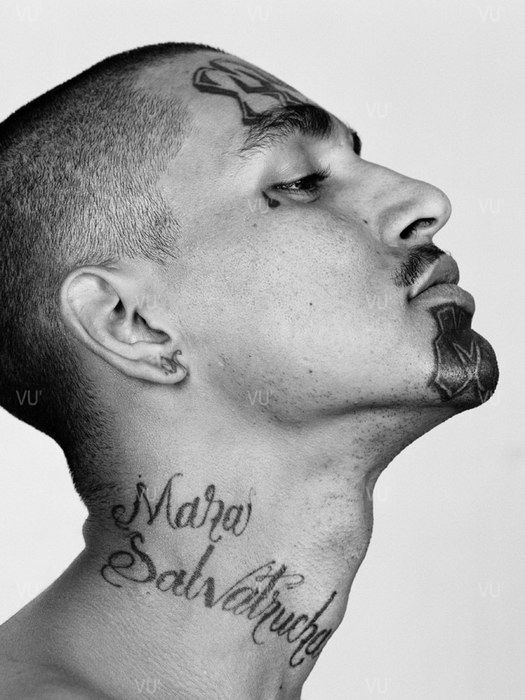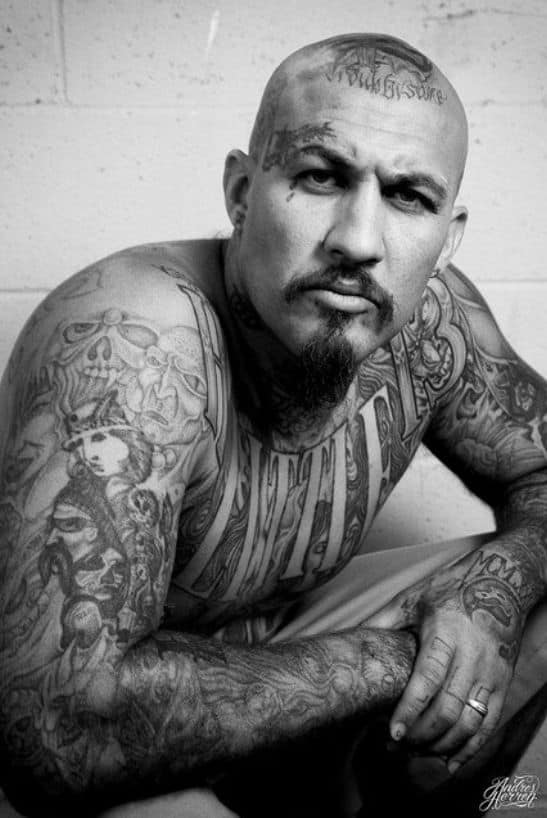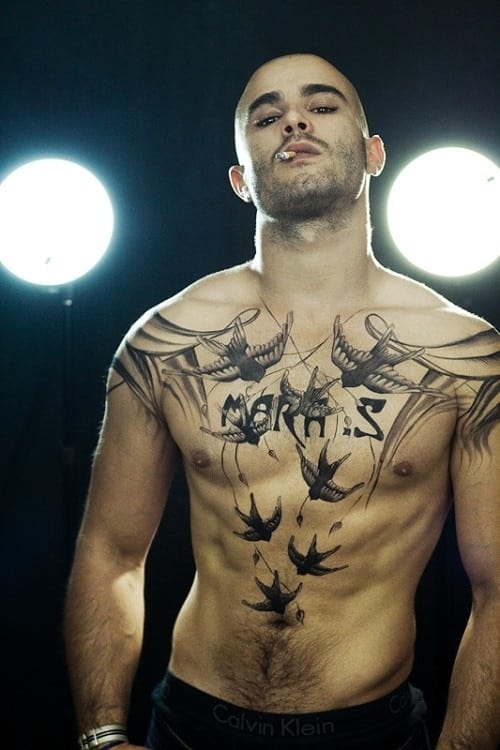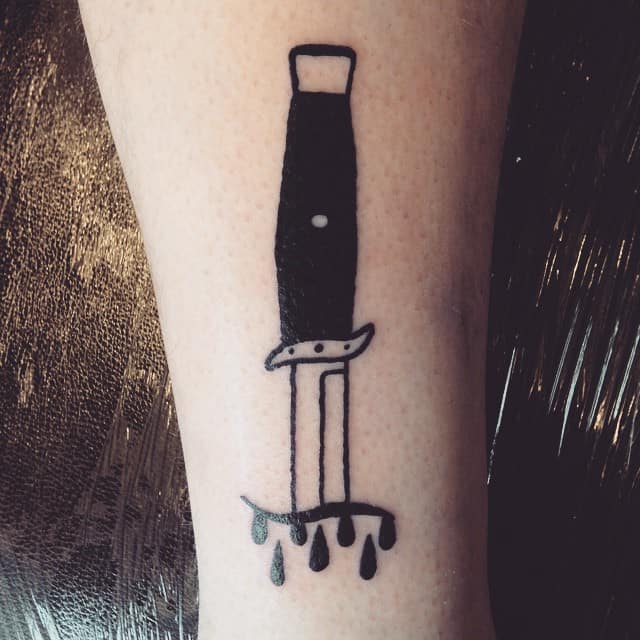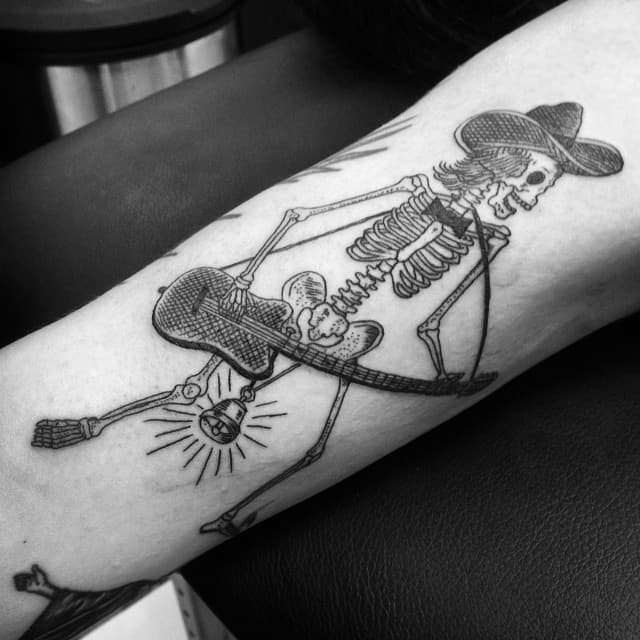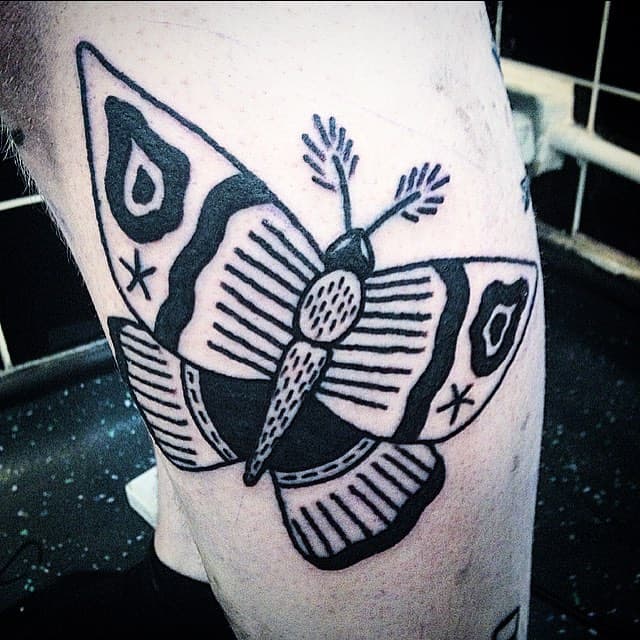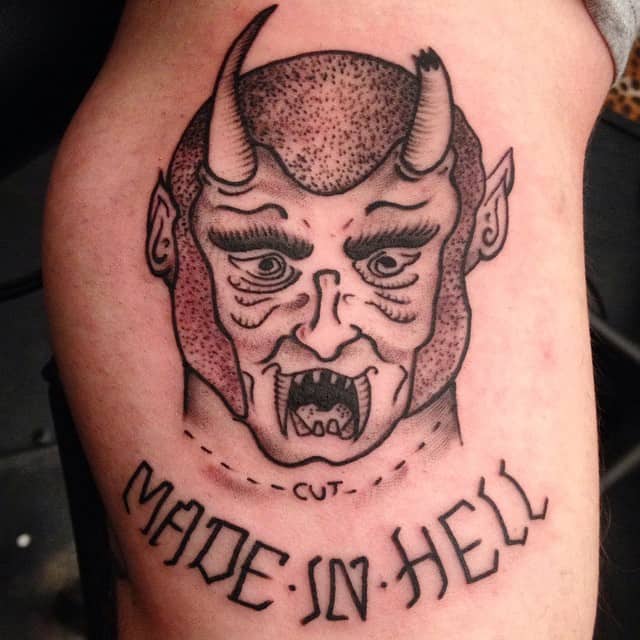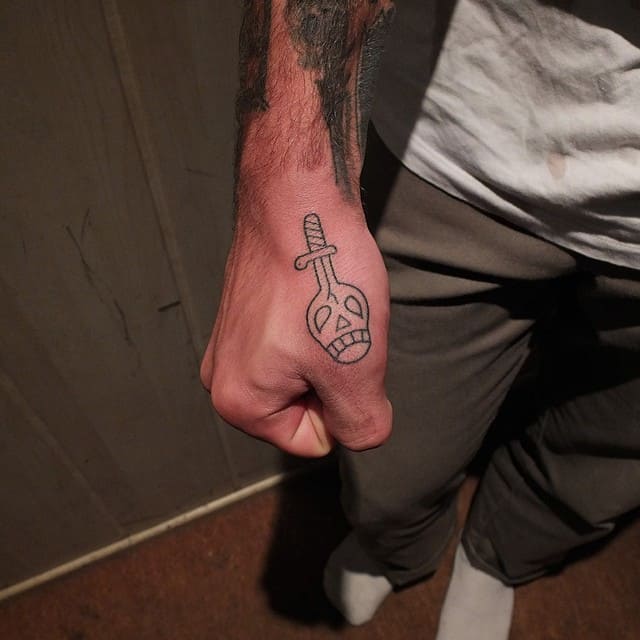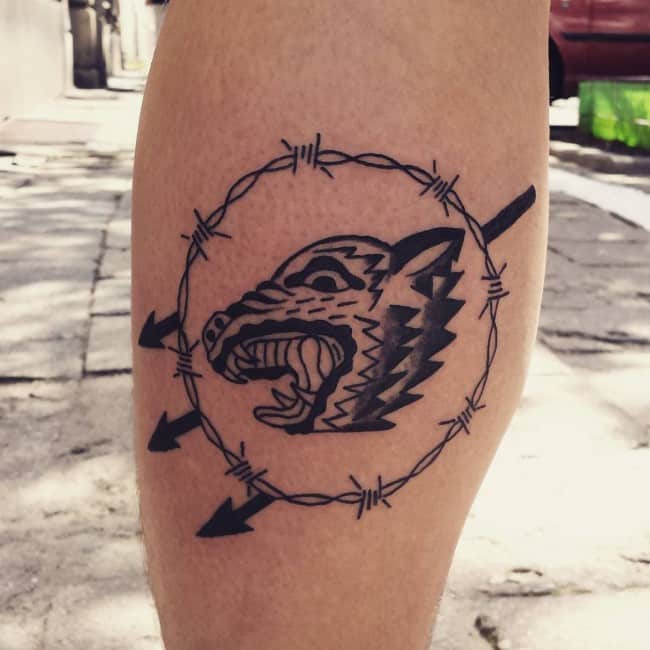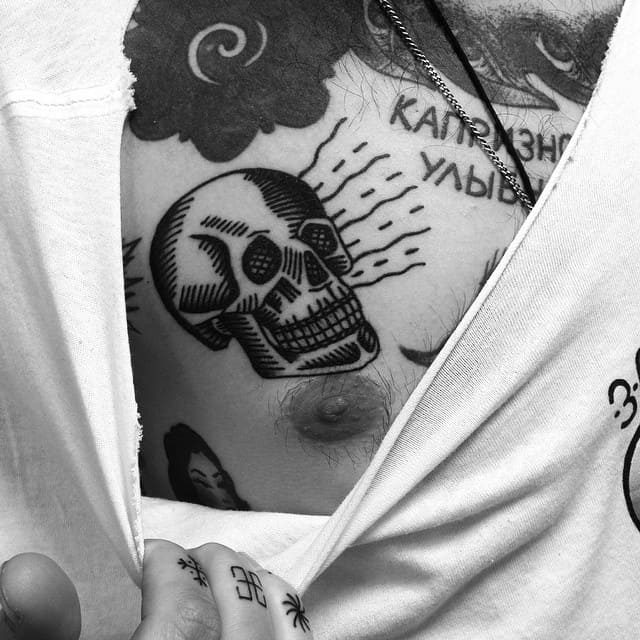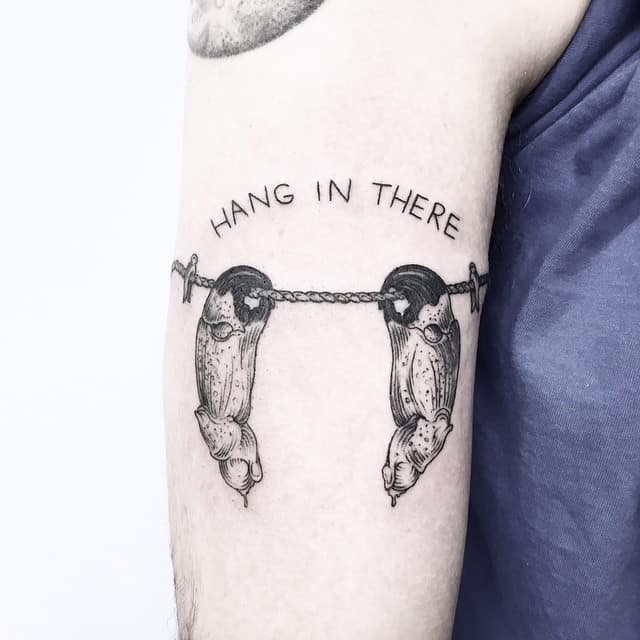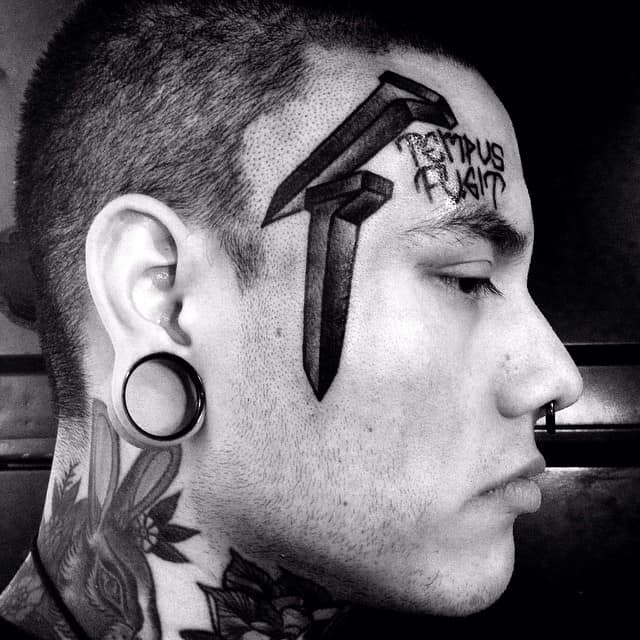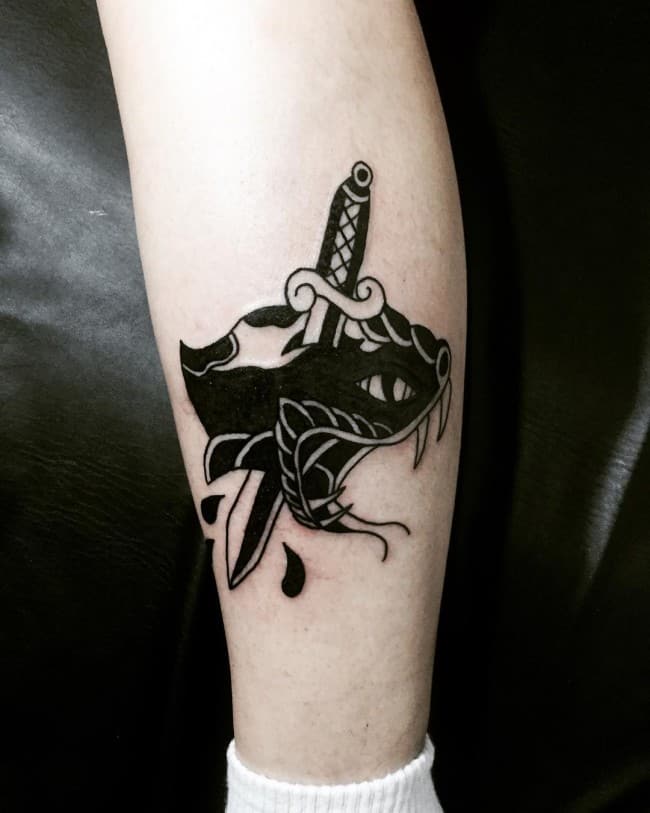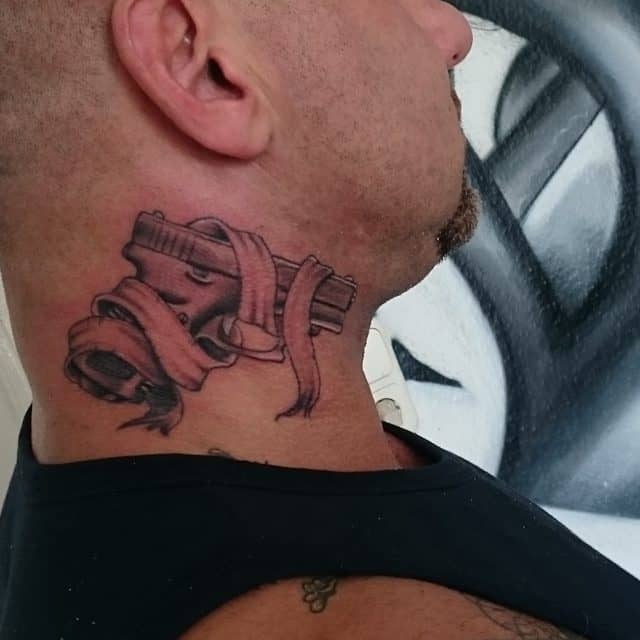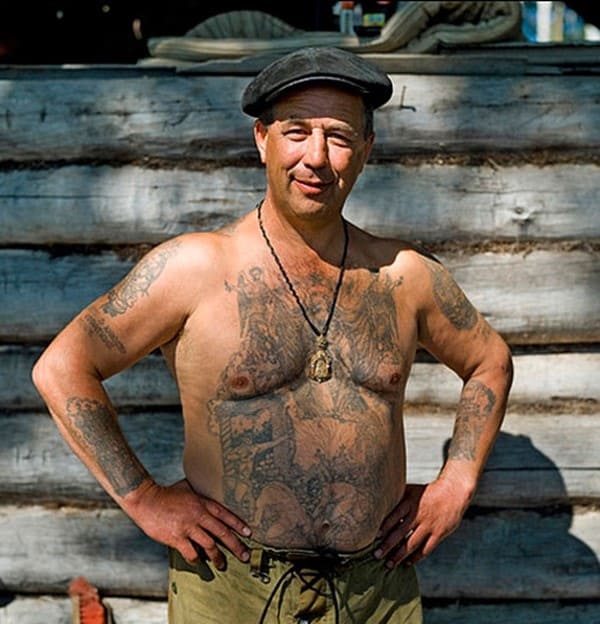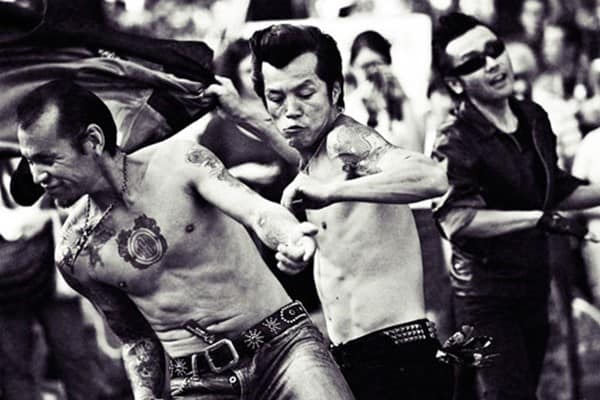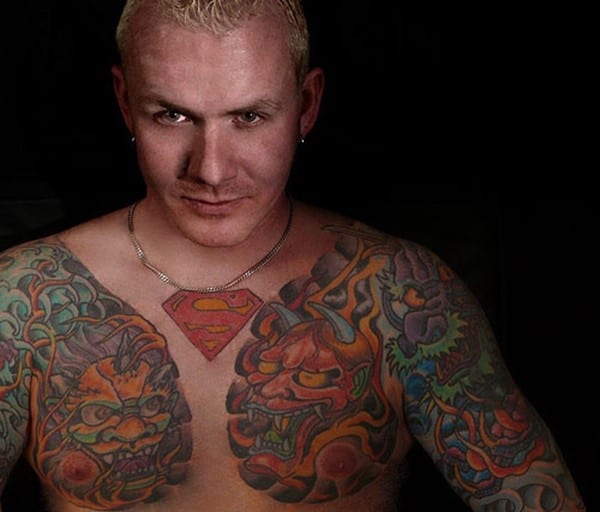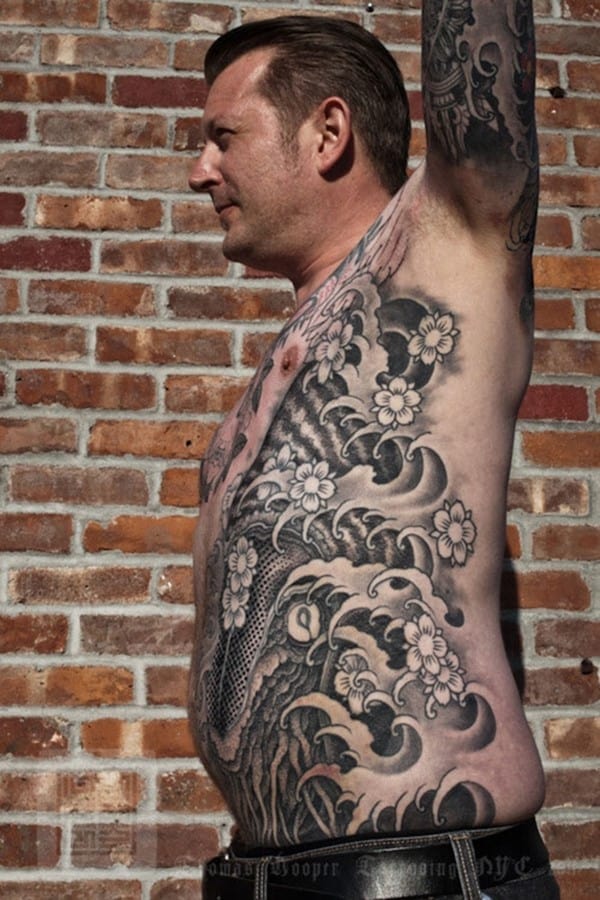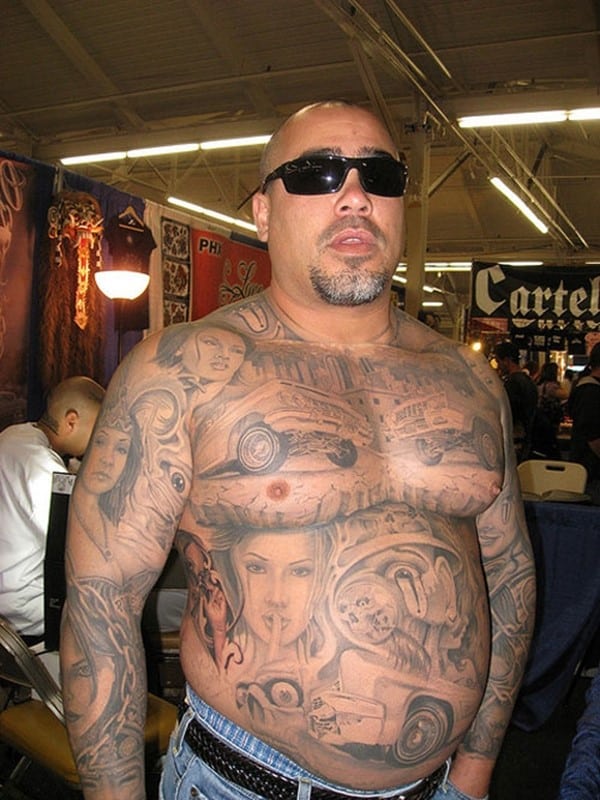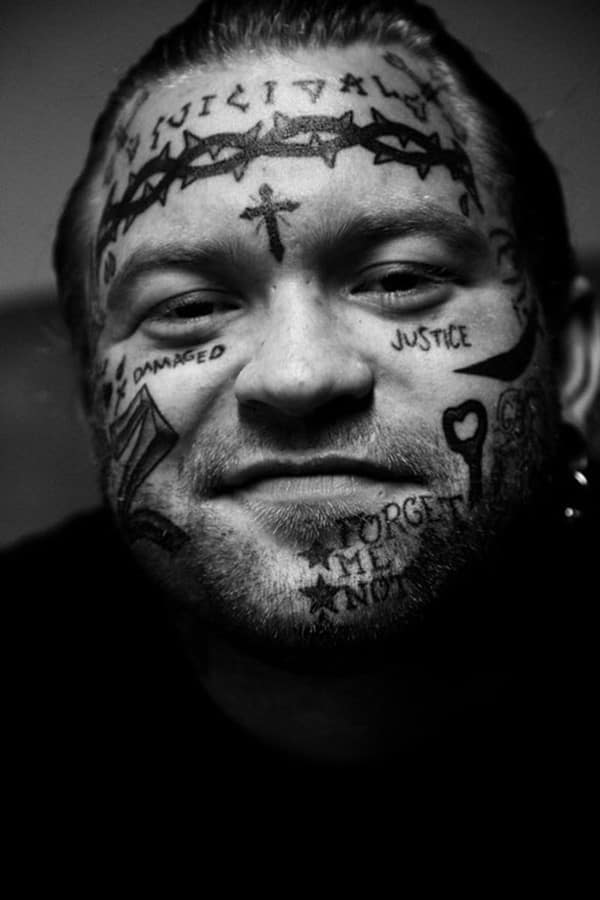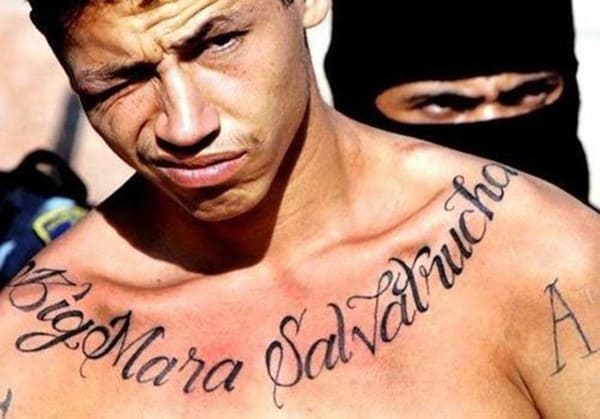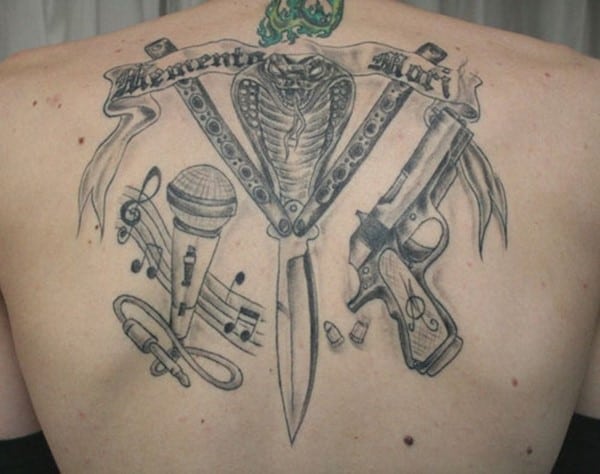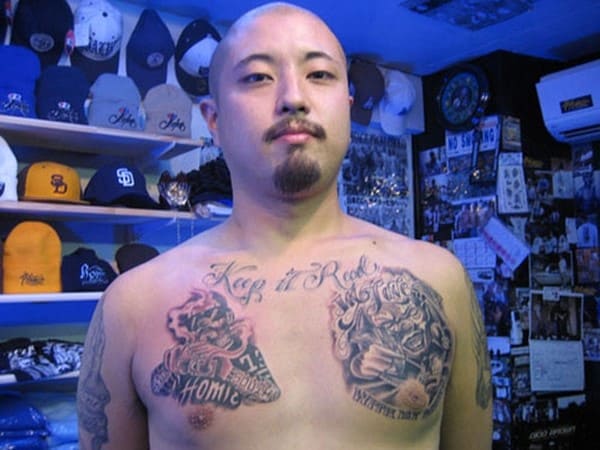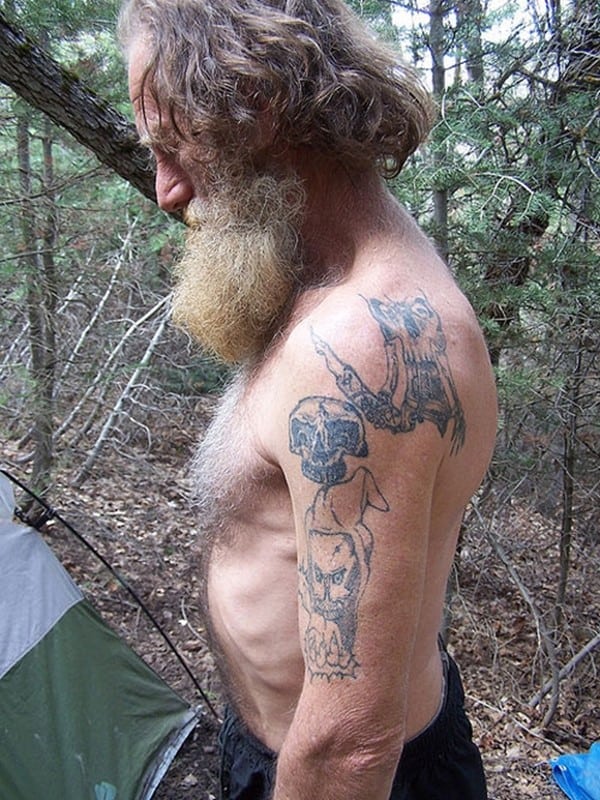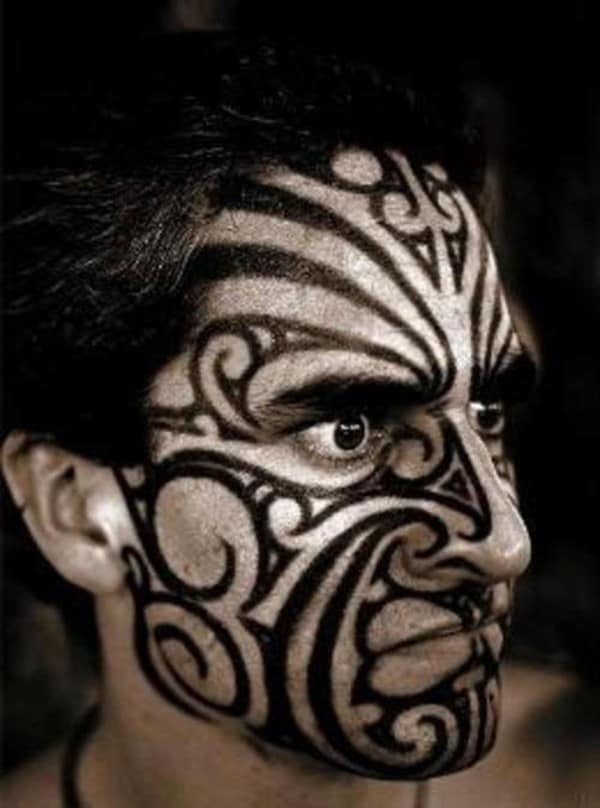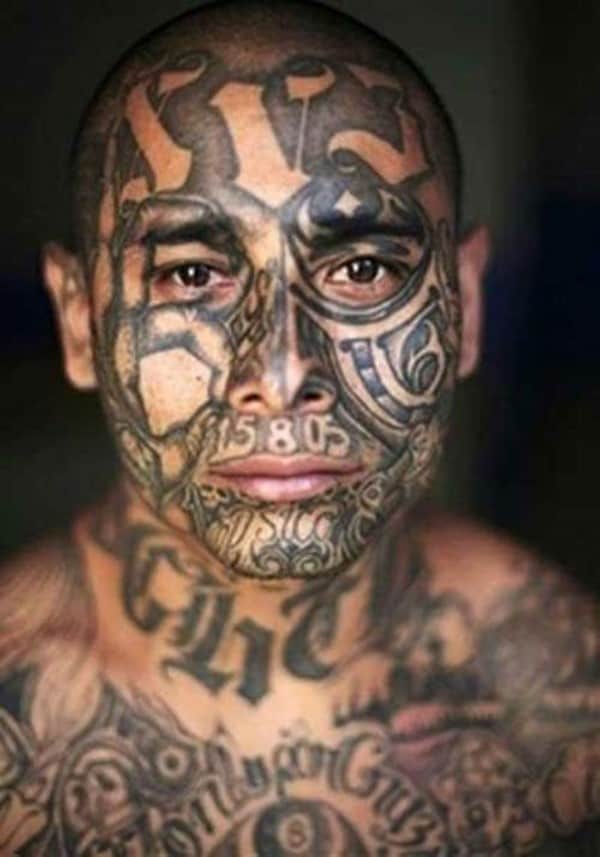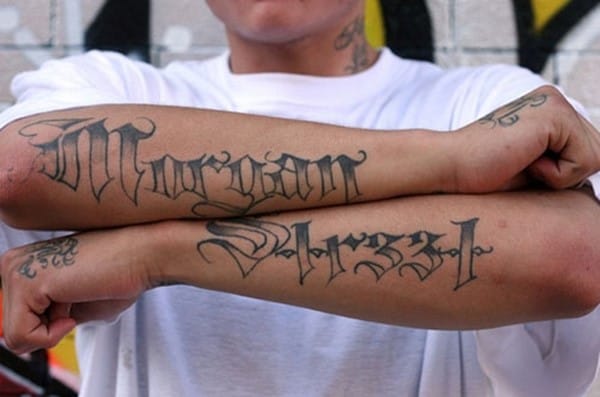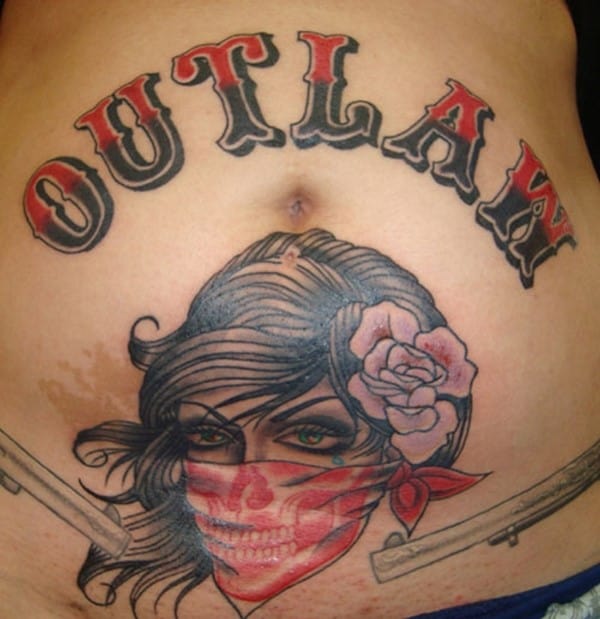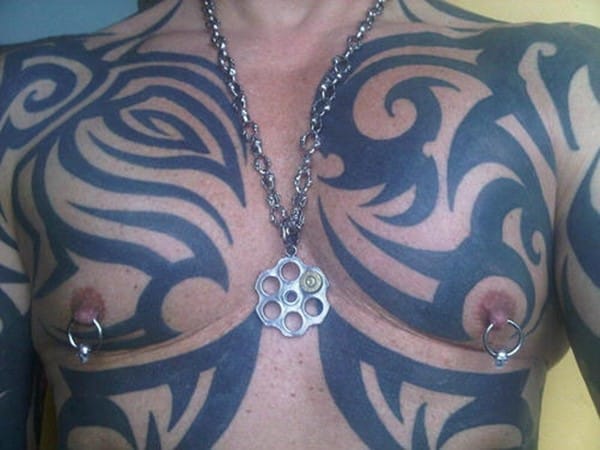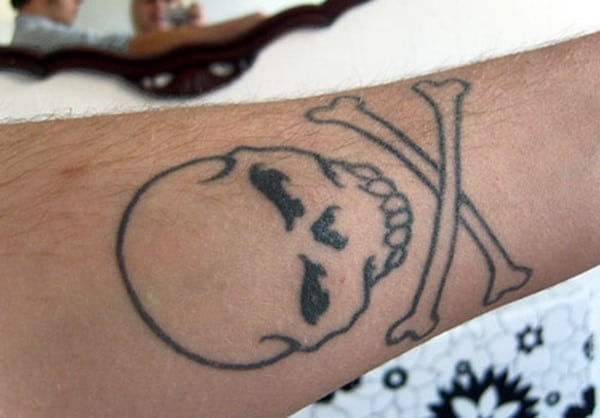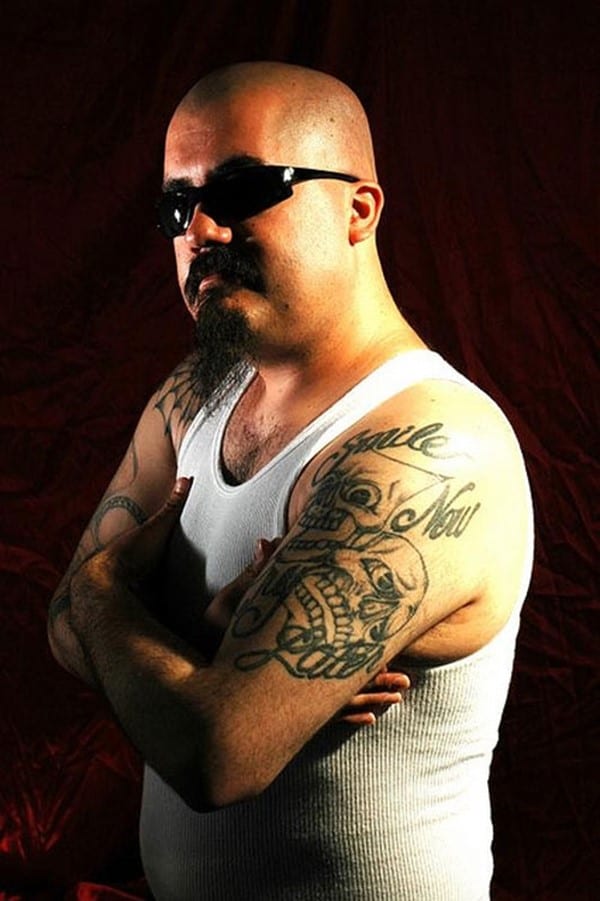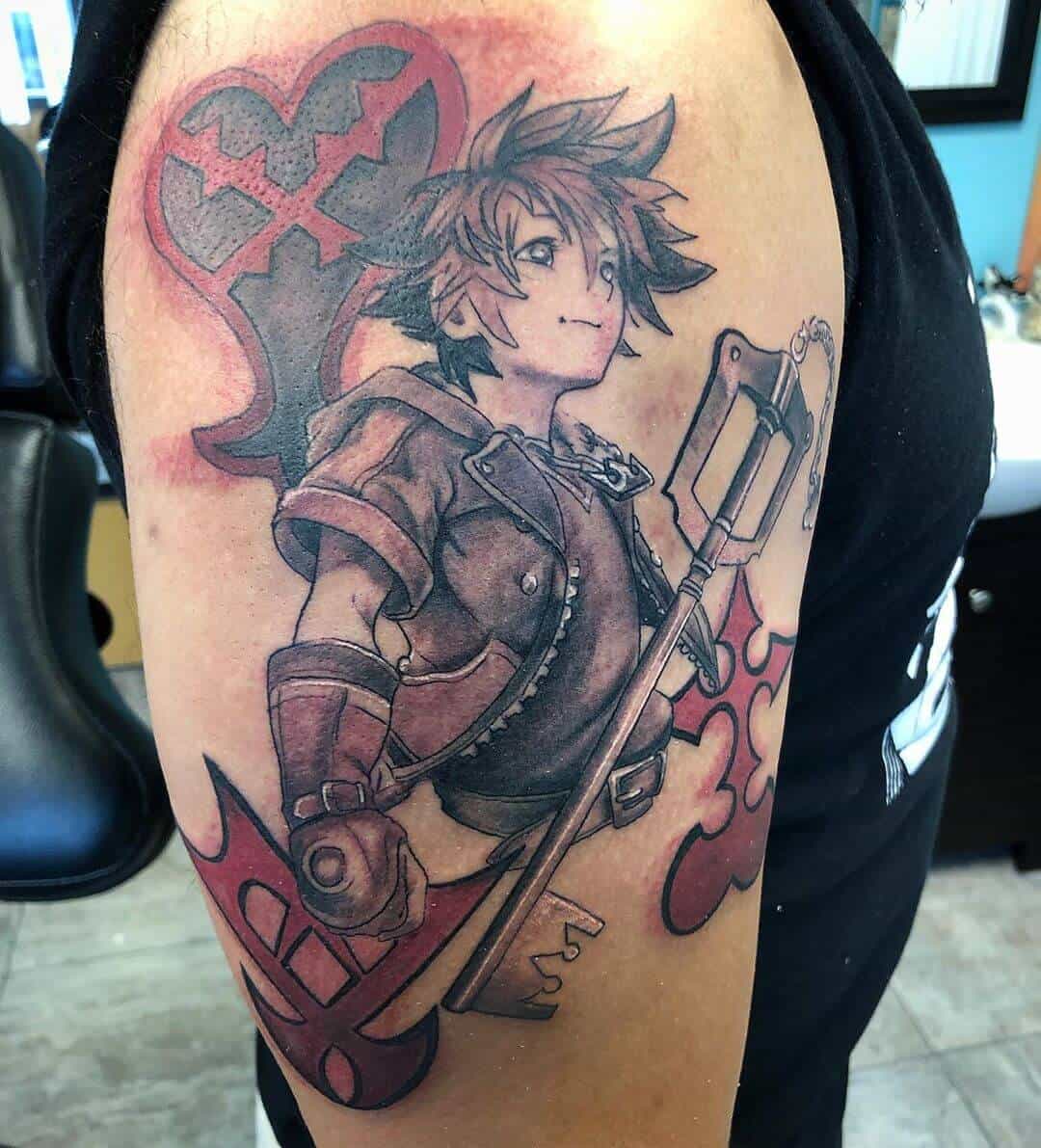Tattoos serve a range of purposes in criminal gangs, and every gang has a more or less secret set of meanings associated with specific designs.
As mysterious as they are intriguing, gang-related tattoos have aroused interest and curiosity for decades.
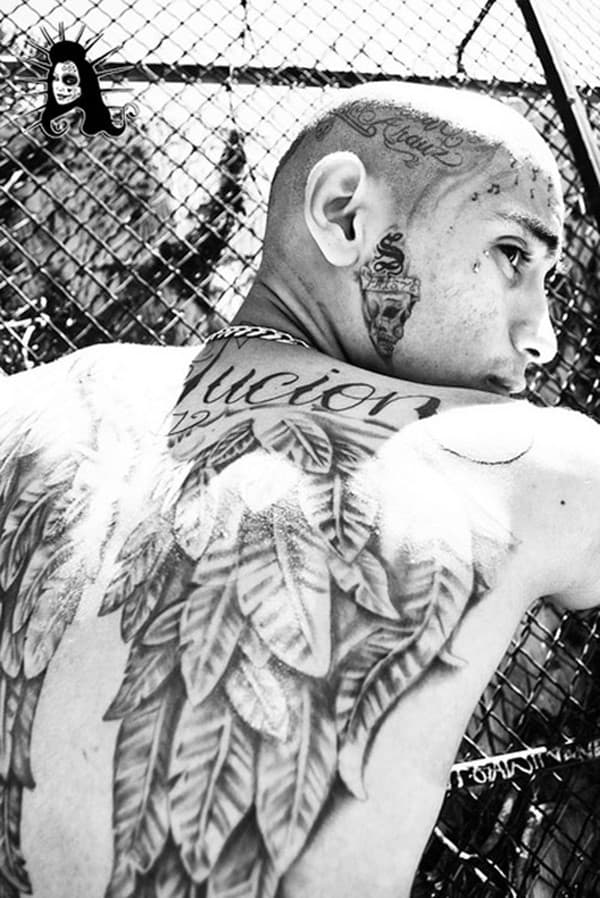
Gang and prison tattoos
Members of certain criminal gangs and mafia groups in and out of prison carry tattoos imbued with highly specific meanings. These tattoos and their meanings vary from group to group, as every gang has its own ‘tattoo language’, so to speak.
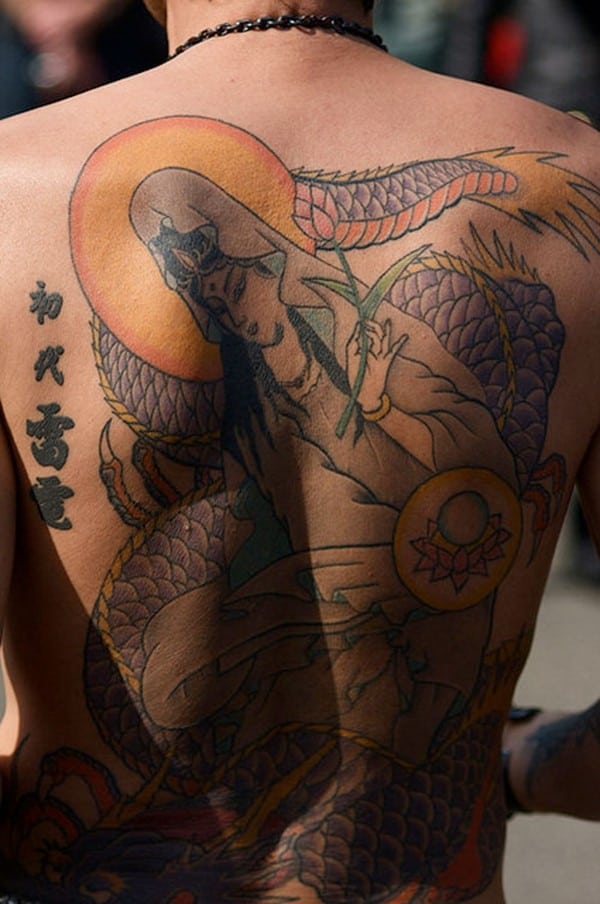
Some gang tattoos are meant as tokens of recognition for the individual’s rank and experience, the specific skills they have, or the crimes they’ve committed in the course of their activity within the group. These tattoos are done voluntarily, meaning the individual has to agree to receive the tattoo.
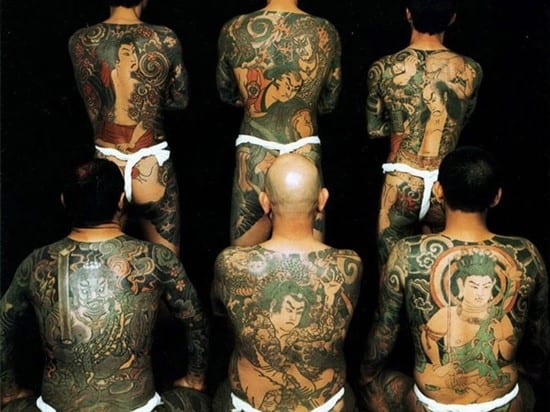
But gang tattoos aren’t always a ‘positive’ thing. Sometimes, they are used as punishment, often given forcibly (without the person’s consent). Typically, these are placed somewhere highly visible and impossible to hide, such as the person’s face.
For criminal groups in prisons, tattoos have further meanings. For instance, the tattoo could indicate the crime the person has committed that resulted in their incarceration.
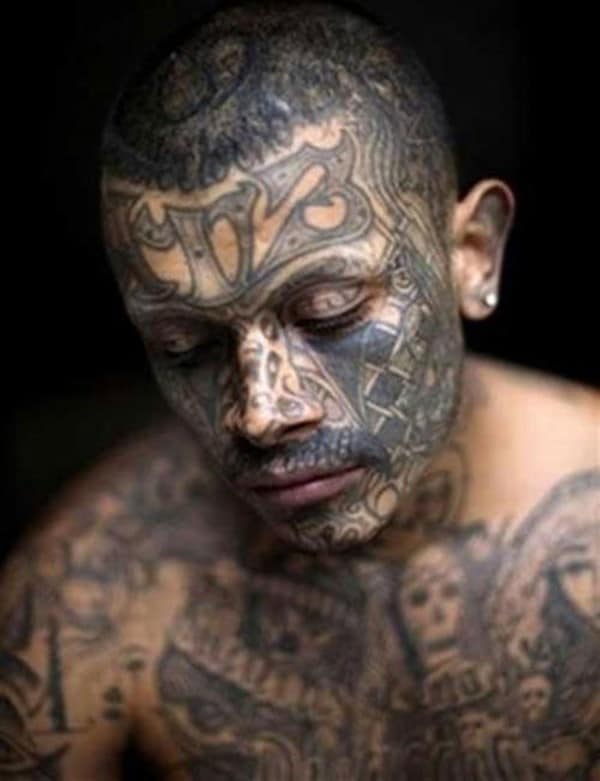
This can either be a form of positive recognition – if the crime was seen as beneficial to the criminal group – or of punishment – if the crime is something that the group disapproves of. The former increases the person’s standing within the group, while the other is meant to shame them and mark them as traitors.
Recommended Next: Don’t miss our guide to samurai tattoos next!
Prison tattoos can also have more neutral meanings, such as the number of times the person has been to prison. In some circles, this is marked by crosses on the person’s knuckles – one cross for each prison sentence.
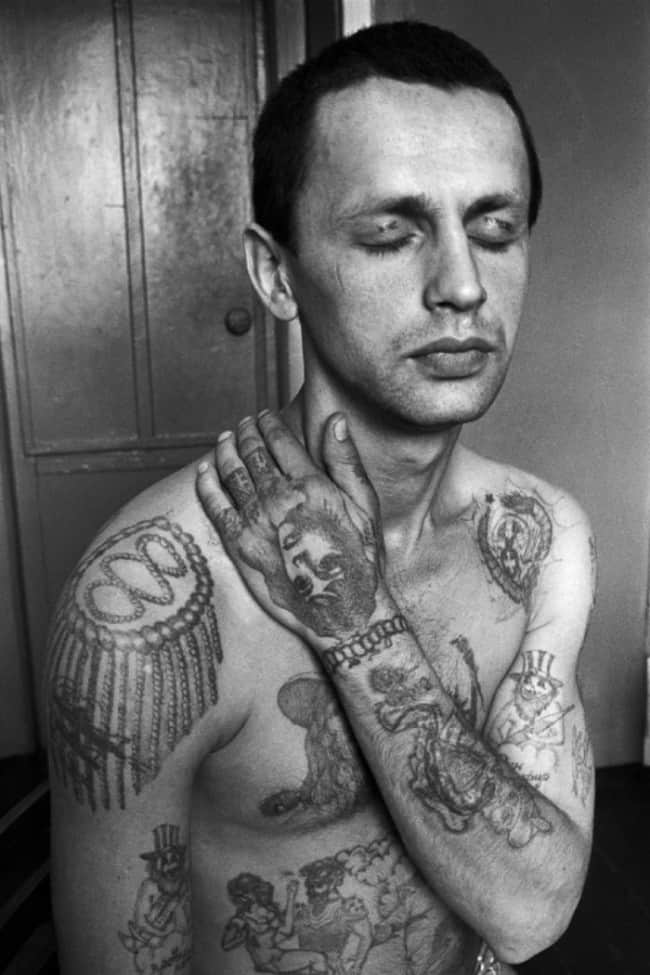
Examples of gang tattoo systems
It would be impossible to list the tattoos of all the gangs in the world – partly because there are so many of them, and partly because this is not exactly a well-researched subject.
Many criminal groups are highly secretive about their markings – understandably – and don’t make them public knowledge. Many also use codes and ciphers, such as those adopted by California’s Crips and Bloods.
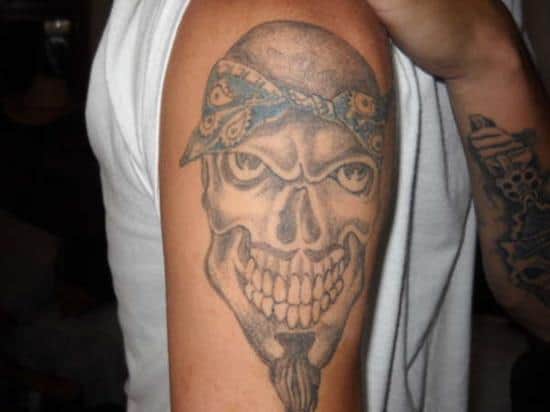
The Crips are an infamous gang based in the coastal regions of southern California, locked in bitter rivalry with the Bloods. Alongside the use of the symbol of a three-pointed or six-pointed crown, the Crips use code in a lot of their tattoos. One form involves replacing individual letters in a word with the letter’s number in the alphabet – 1 for A, 2 for B, 3 for C, etc.
For instance, the numbers 211 tattooed on a Crip member stand for ‘BK’, which in turn means ‘Blood Killer’ – indicating the individual has killed a member of the rival gang, the Bloods.
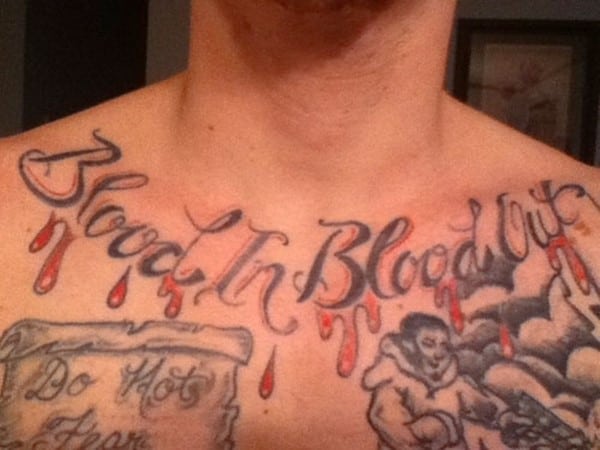
The Bloods also use forms of code in their markings. One example is the 13/13 cipher – splitting the alphabet in half and replacing the letters from the first half with those of the second, and vice versa – A becomes N, and N becomes A, B becomes O and O becomes B, etc.
Besides the use of code, Blood members will often have the letters MOB tattooed – standing for ‘Member of Blood’. The word ‘Piru’ is also common. The original Blood gang was called the Compton Pirus (named after West Piru street in Los Angeles), so this is a throwback to the gang’s origins. A dog paw is also a common marking.
Recommended Reading: Check out our inspirational bear tattoo guide.
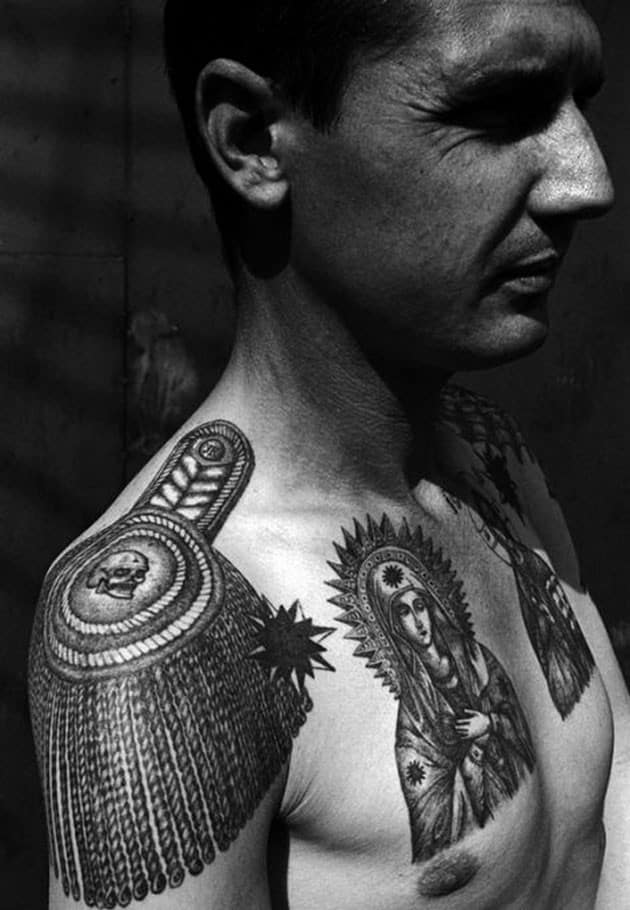
Asian gang tattoos
When thinking of criminal-related tattoos, one of the key examples that will come to mind are the impressive full-body tattoos of the Japanese mafia, the Yakuza. Tattooing in Japan has long had a connection with criminal activity – hundreds of years ago, the authorities used facial tattoos to permanently mark and shame criminals.
The mafia adopted this practice and began to mark themselves, to grossly simplify a long and complex history.
As a matter of fact, expansive tattoos are no longer synonymous with mafia affiliation in Japan – it’s impractical, for obvious reasons, and draws undue attention. Particularly considering that tattooing is generally frowned upon in Japan, so not many individuals carry visible tattoos.

Russian prison tattoos
Of the markings given to Russian criminals in prisons, the known symbols include:
- Cat – common for thieves. A single cat means that the thief acted alone, while several cats together indicate theft as part of a criminal group. The head of a cat is also considered a good luck tattoo for a thief, though when worn on the chest, it signifies the criminal’s disregard and hatred for law enforcement.
- Scarab beetle – also a symbol of good luck for thieves, usually symbolizing a pickpocket.
- Star – generally, each point of the star represents a year in prison. Elite members of organized crime in Russia, known as Vor V Zakone (‘thief by law’), use a star with 4 large arms, 4 medium ones, and 8 small ones. A Vor V Zakone star on each shoulder indicates a position of high authority within the gang, while stars on the legs or knees mean that the person won’t kneel before anybody.
- Cross – subordination or slavery. Can be given forcibly as punishment.
- Manacles – representing five or more years in prison.
- Military insignia – often signify that the prisoner was a high-ranking criminal prior to being incarcerated.
- Skull – usually means that the prisoner is a murderer.
- Barbed wire – when placed on the forehead, it means the prisoner is serving a sentence of life imprisonment without possibility of parole.
- Birds on the horizon – signify the longing for freedom and mean ‘I was born free and should be free’.
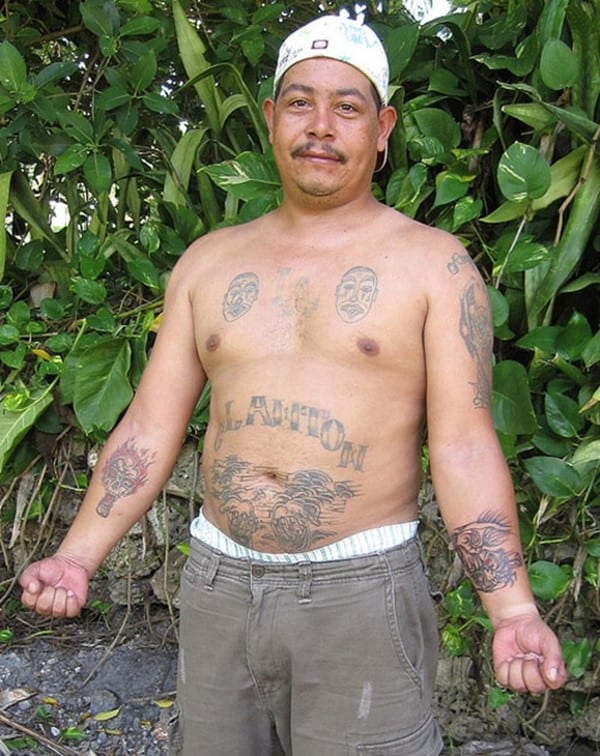
General criminal tattoo symbols
Alongside gang-specific or prison-specific tattoos, there are a number of symbols and designs that can carry universal meanings in the criminal underworld.
- Tiger – power and strength
- Spider web – time spent in prison or time spent ‘caught in the web’ of the inescapable gang lifestyle
- Three dots – arranged in a triangle, they stand for ‘prison, hospital, cemetery’ – the typical path of a gang member. In some circles, this would be the first tattoo received by an individual before becoming a full member of the gang. This design is associated primarily with the Mexican Mafia
- Five dots – signifying ‘a circle of friends’ and the protection that being a member of a criminal group affords. Originally a Vietnamese symbol, it’s used most commonly by the Bloods, Gangster Disciples, and Asian triads
- Masks or clown faces – most commonly associated with Asian and Latin gangs, these usually mean ‘play now, pay later’.
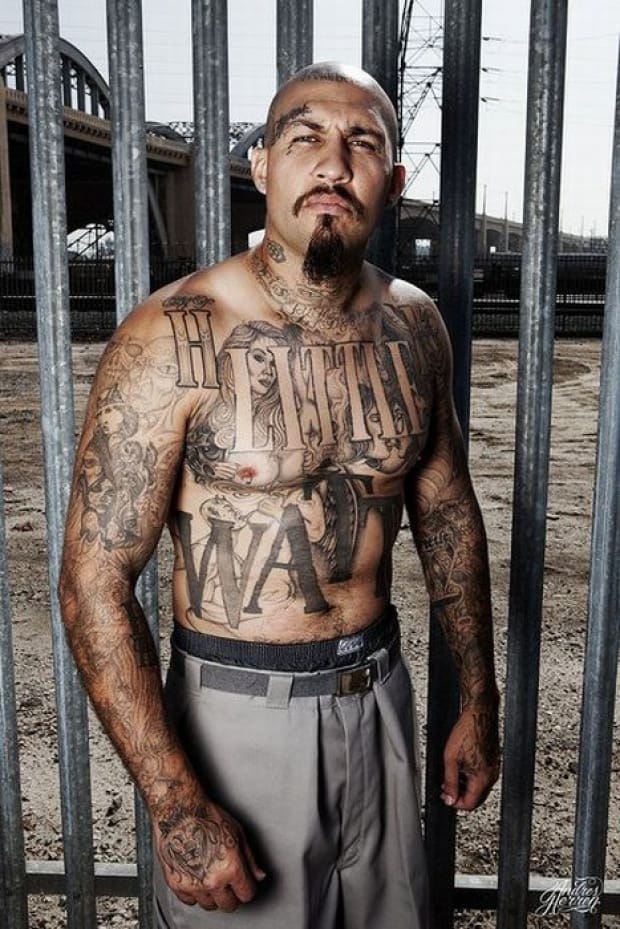
Final words
Let’s end on an obligatory word of caution: most gangs take their individual tattoos extremely seriously. Some tattoos are earned, in the case of those marking a rank, skill, or experience – others are a form of punishment for serious transgressions against the rules of the gang.
Recommended: We tackle snake tattoos in our latest guide.
As such, it would be unwise to go out and get a tattoo that is associated with a specific gang and has a meaning therein. In the event that the ‘unearned’ tattoo should be discovered, this could have grave consequences for the person. It’s therefore highly inadvisable to adopt gang markings purely for aesthetic purposes.
